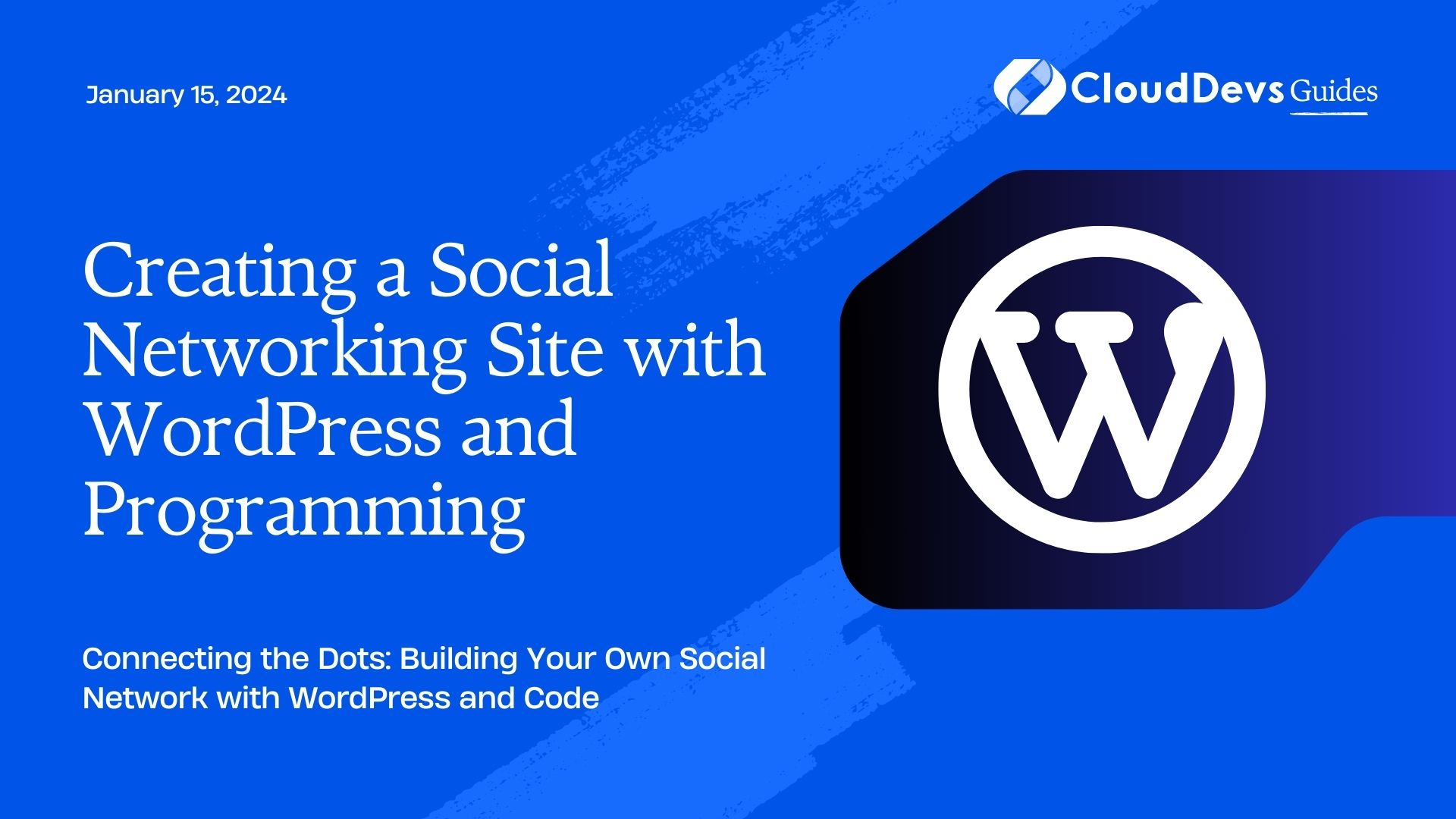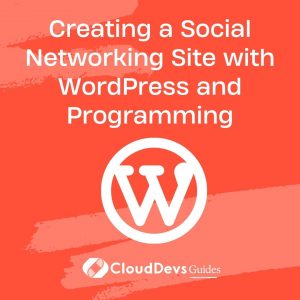Creating a Social Networking Site with WordPress and Programming
In today’s digital age, social networking sites have become an integral part of our lives. They connect people, facilitate communication, and provide a platform for sharing thoughts and experiences. If you’ve ever thought about creating your own social networking site, you’re in the right place. In this guide, we’ll walk you through the process of building a social networking site using the versatile WordPress platform and incorporating essential programming elements.
Table of Contents
1. Why WordPress for Social Networking?
WordPress is widely known for its simplicity and flexibility when it comes to website development. While it’s primarily recognized as a blogging platform, it can be extended to build complex websites, including social networking sites. Here’s why WordPress is an excellent choice:
1.1. Ease of Use and Customization
WordPress offers an intuitive interface that allows you to easily manage content and user interactions.
An extensive library of themes and plugins makes it customizable to fit your social networking site’s unique needs.
1.2. Scalability
WordPress can handle a large number of users and content, making it suitable for growing social networks.
1.3. Community and Support
With a massive community of developers and users, you’ll find plenty of resources and support when building your site.
Now, let’s dive into the steps to create your own social networking site with WordPress and programming.
Step 1: Set Up WordPress
Before we start with any programming, you need a WordPress website as your foundation. Here’s how to set it up:
1.1. Choose a Domain and Hosting
- Select a domain name that represents your social network.
- Choose a reliable hosting provider that meets your site’s needs.
1.2. Install WordPress
- Most hosting providers offer a one-click WordPress installation. Follow the provided instructions.
- Set a strong username and password for your WordPress admin account.
1.3. Select a Theme
- Choose a WordPress theme that aligns with the look and feel you envision for your social networking site.
- You can find free and premium themes in the WordPress theme repository and other marketplaces.
1.4. Install Essential Plugins
- Add plugins like BuddyPress and bbPress to add social networking and forum functionality to your site.
- Configure these plugins according to your requirements.
- Now that your WordPress site is ready, let’s move on to the programming part to enhance its social networking features.
Step 2: Coding the Social Network Features
To create a custom social networking experience, you’ll need to add features that aren’t typically included in a standard WordPress installation. This requires some coding expertise, but don’t worry—we’ll break it down for you.
2.1. User Registration and Profiles
Create custom registration and login forms to collect user information.
Build user profiles with fields for personal details, profile pictures, and social links.
php
// Sample code for custom registration form
function custom_register_form() {
// Your code here
}
add_action('register_form', 'custom_register_form');
2.2. Activity Feeds
Design an activity feed where users can post updates, photos, and videos.
Implement real-time updates using AJAX for a dynamic user experience.
javascript
// Sample AJAX code for real-time updates
jQuery(document).ready(function($) {
// Your code here
});
2.3. Friendship and Messaging
Develop a system for users to send friend requests and exchange messages.
Ensure privacy settings so users can control who can send them messages.
php
// Sample code for friend request system
function friend_request_system() {
// Your code here
}
add_action('init', 'friend_request_system');
2.4. Groups and Communities
Create group functionality, allowing users to create and join communities of interest.
Develop group discussion boards and event calendars.
php
// Sample code for group creation
function create_group() {
// Your code here
}
add_action('init', 'create_group');
2.5. Notifications
Implement a notification system to keep users informed about activity on their profiles and within groups.
php
// Sample code for notifications
function user_notifications() {
// Your code here
}
add_action('init', 'user_notifications');
Remember, these are just the basic functionalities. Depending on your social networking site’s niche and purpose, you may need to code additional features.
Step 3: Security and Privacy
Building a social networking site comes with the responsibility of ensuring the security and privacy of your users. Here are some key considerations:
3.1. User Data Protection
Comply with data protection regulations like GDPR and ensure user data is securely stored.
3.2. User Authentication
Implement strong authentication mechanisms, including two-factor authentication (2FA).
3.3. Content Moderation
Develop content moderation tools to prevent abusive or inappropriate content.
3.4. Privacy Settings
Give users control over their data and privacy settings.
Step 4: Testing and Optimization
Before launching your social networking site, thoroughly test it to ensure everything works as expected. Pay attention to performance optimization, especially if you anticipate a high volume of users.
4.1. Performance Testing
Use tools like GTmetrix and Google PageSpeed Insights to optimize your site’s loading speed.
4.2. User Testing
Invite a group of users to test your site and gather feedback for improvements.
4.3. Scalability
Ensure your site can handle traffic spikes. Consider using content delivery networks (CDNs) for faster content delivery.
Step 5: Launch and Promotion
Once you’ve completed coding, testing, and optimization, it’s time to launch your social networking site.
5.1. Promote Your Site
Use social media, email marketing, and SEO to promote your site and attract users.
Consider running promotional campaigns to kickstart user engagement.
5.2. Community Building
Actively participate in your community, engage with users, and gather feedback for continuous improvement.
Step 6: Continuous Improvement
Building a social networking site is an ongoing process. Regularly update and improve your site based on user feedback and changing trends.
6.1. Feedback Mechanisms
Provide channels for users to submit feedback and report issues.
Listen to your community and implement changes accordingly.
6.2. Stay Informed
Keep up with industry trends and emerging technologies to stay competitive.
Conclusion
Creating a social networking site with WordPress and programming is a rewarding endeavor that allows you to build a unique online community. While it requires dedication and coding skills, the results can be truly remarkable. With WordPress as your foundation and careful programming, you can create a social networking site that connects people and fosters meaningful interactions in the digital age. So, roll up your sleeves, follow this guide, and get ready to launch your very own social networking platform. Your community is waiting!
Remember, building a social network takes time and effort, but the satisfaction of seeing your vision come to life is worth every moment spent coding and refining your platform. Good luck, and happy networking!
Table of Contents








